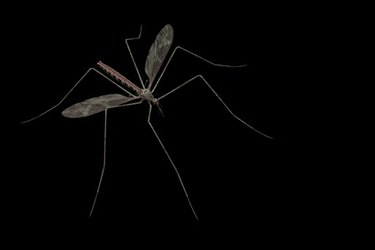Things You'll Need
Duct tape
Heavy plastic wrap
Permanent marker

DDT was first used as a pesticide during World War II. It quickly killed malaria carrying insects, keeping military members healthier. After the war, DDT was used as an insecticide on many food crops in addition to eradicating disease carrying insects. In 1962, Rachel Carson wrote "Silent Spring." The book outlines the dangers of pesticides to both humans and the environment. In 1972, DDT was banned. While DDT isn't sold in the United States, it still occasionally turns up in old houses, barn or warehouses.
Step 1
Inspect the DDT container. Make sure that the container is intact. If there is leakage or some type of spill, clean the spill and collect it in a separate container for disposal.
Video of the Day
Step 2
Seal the container of DDT. If the container is damaged, wrap in heavy plastic and tape. If the package label is covered, label the bundle.
Step 3
Call your local hazardous waste disposal site. Many counties have a drop off point or a yearly pick up. Never incinerate or dump DDT.
Step 4
Keep the DDT in a locked storage area until it can be taken to an appropriate disposal site.
Tip
Empty DDT containers need to go to hazardous waste disposal with the old DDT.
Warning
Wash any skin exposed to DDT. Wash hands, arms and face after handling DDT, even after wearing gloves.
Video of the Day
- Centers for Disease Control: Occupational Safety and Health Guidelines for DDT
- National Agricultural Safety Database: Dispose of Pesticides Properly
- Manitowoc County Division of Emergency Services: Disposing of Hazardous Wastes from the Home
- Montana Government: Pesticide Disposal and Container Recycling
- Duke University: DDT, An Introduction